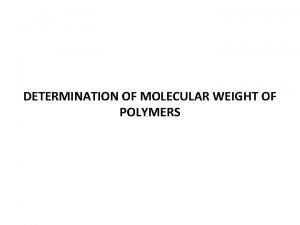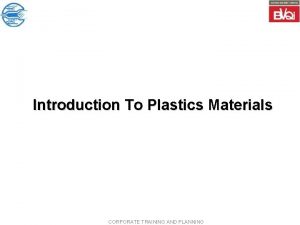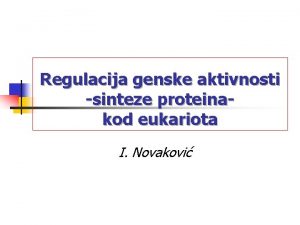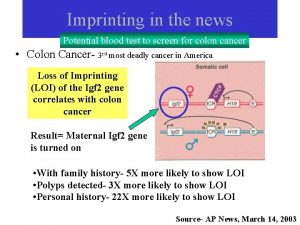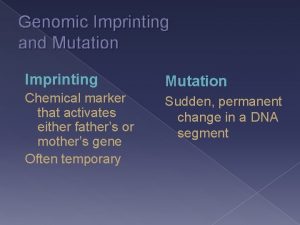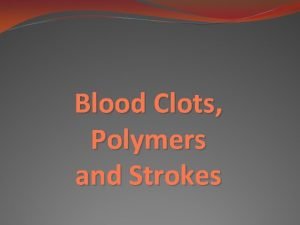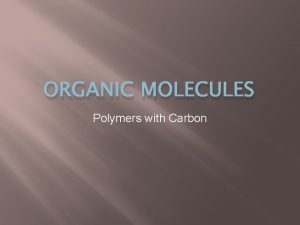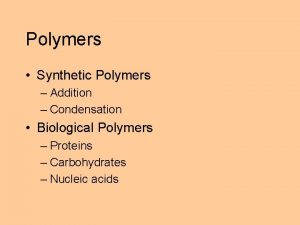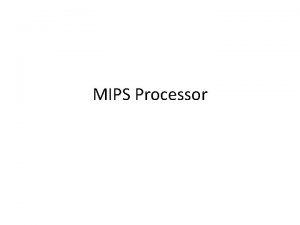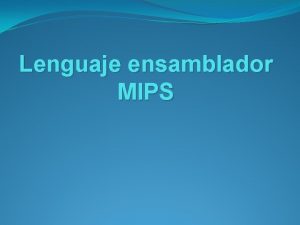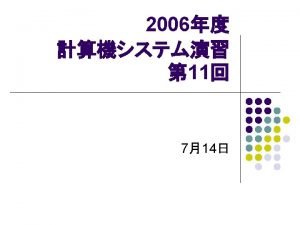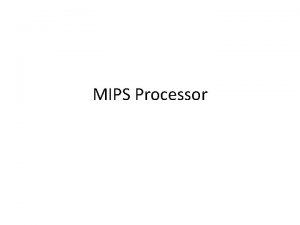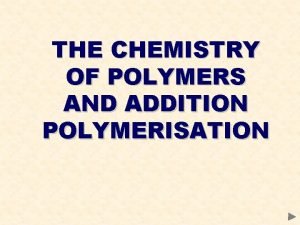Molecular Imprinting Polymers MIPs Introduction q In chemistry












- Slides: 12

Molecular Imprinting Polymers MIPs

ØIntroduction q In chemistry, molecular imprinting is a technique to create template-shaped cavities in polymer matrices with memory of the template molecules.

Schematic of molecular imprinting a c assembly Template (binding) b 1 - add cross-linker 2 - polymerise (in porogenic solvent) template removal re-binding recognition site Template

ØHistory of Molecular Imprinting q Molecular imprinting was used as early as the 1930's by MV Polyakov to selectively capture various additives in a silica matrix. q In the 1940's Linus Pauling hypothesized that a process similar to molecular imprinting could be responsible for the selectivity of antibodies to their respective antigens.

ØBiological systems q Molecular recognition plays an important role in biological systems and is observed in between receptorligand, antigen-antibody, DNA-protein, sugar-lectin, RNA -ribosome, etc Antigens Antigen-binding site Antigen

ØHistory of Molecular Imprinting q The concept of molecular imprinting was revived in the 1970's when Günter Wulff discovered that highly crosslinked organic polymers could also be used to make molecular imprints with high specificity. q In more recent years, imprinted polymers have been used to capture everything from steroids to TNT.

ØImprinting methodologies Covalent Reversible covalent linkage

ØMolecular Imprinting: Covalent Wulff & Schauhoff J. Org. Chem. , 1991, 56, 395 -400.

ØImprinting methodologies advantages and disadvantages Covalent Imprinting l Ability to fix template in place during polymerisation - lower dispersity in binding sites l Can be carried out in any solvent flexibility l Can be difficult to remove template from polymer - low recovery of valuable templates and low number of binding sites l Limited number of chemistries for fixing template to polymer reversibly - reduction in number of templates that can be imprinted l Poor kinetics of re-binding

ØImprinting methodologies Non-covalent Monomer-template complexes

ØMolecular Imprinting: Non-covalent

Interesting, right? This is just a sneak preview of the full presentation. We hope you like it! To see the rest of it, just click here to view it in full on Power. Show. com. Then, if you’d like, you can also log in to Power. Show. com to download the entire presentation for free.
 End group analysis
End group analysis End group analysis
End group analysis Imprinting definition psychology
Imprinting definition psychology Imprinting meaning psychology
Imprinting meaning psychology Barovo telo
Barovo telo Imprinting biology examples
Imprinting biology examples Genomic imprinting definition
Genomic imprinting definition Dengeli kromozom anomalileri
Dengeli kromozom anomalileri Melting and boiling point of oxygen
Melting and boiling point of oxygen Ionic covalent metallic
Ionic covalent metallic Giant molecular structure vs simple molecular structure
Giant molecular structure vs simple molecular structure Democritus atomic model diagram
Democritus atomic model diagram Ap chemistry molecular geometry
Ap chemistry molecular geometry
